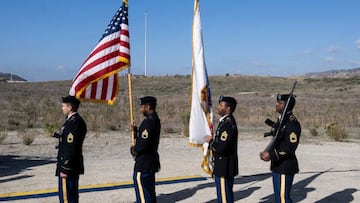How much does U.S. Army - Military pay in the United States?
The US Army is struggling to recruit new numbers, leading to a push to increase enlistment bonuses. How much are members paid?

After 9/11, thousand enlisted in the US military, but as time passed, the number of people joining the Army declined. In 2019, the Army recruited 68,000 people, and for the 2022 fiscal year, the organization set a goal of adding around 60,000 members. By the end of the recruitment period, which wrapped up on 30 September, only 45,000 people had been recruited, a trend seen across military divisions.
How much do you make in the Army?
The salary for those in the Army differs based on experience and class. The lowest ranking solider, a Private (E1), has a salary of $21,999.60, excluding bonuses. A Private (E2), the next step up, receives $$24,656.40, followed by a Private First Class at $25,927.20. As one moves up to either Specialist or Corporal, the Army factors in years of experience, as they do with Sergeants and Staff Sergeants.
Base salaries for officers, rather than soldiers, are higher overall. In addition to their annual salary, members are also eligible for bonuses and retirement, and healthcare benefits. The bonuses can be pretty substantive, with the Army offering “up to an additional $50,000 for enlisting in certain jobs” or “up to $40,000 just for reporting to Basic Training within 30 days of enlistment.” Nevertheless, it seems that these financial incentives are not enticing enough, leading to a drop off in military recruitment not seen before.
Bonuses and benefits
n addition to their annual salary, members are also eligible for bonuses and retirement, and healthcare benefits. The bonuses can be pretty substantive, with the Army offering “up to an additional $50,000 for enlisting in certain jobs” or “up to $40,000 just for reporting to Basic Training within 30 days of enlistment.” However, it seems that these financial incentives are not to entice young people to join the Army.
What is causing the decline in enlistment?
There are a few reasons cited by the army, including the “most challenging labor market since the inception of the all-volunteer force” and the fact that only 29 percent of young people “qualify for military service because of obesity, drugs, physical and mental health problems, misconduct, and aptitude.” The Economist has pointed to the pandemic as another reason for the sudden decrease, highlighting how online learning worsened the academic standing of many students and led to a mental health crisis across age groups. Additionally, the Army often uses schools and public events to recruit young people, and with many campuses closed, convincing students to join was made more difficult.
The Army has targeted low-income high schools for recruitment
One fact that people removed from military service often find striking is that thirty percent of recruits are the child of a former or current member of the armed forces. More broadly, over seventy percent of recruits have a family member that has served, highlighting how military with the military way of life is a major indicator in whether a person joins or not.
The RAND Corporation, which provides research support for the US military, published a report on Junior ROTC programs and recruitment in 2017 that sheds light on how the Army’s strategy to attack new members. The report highlights that JROTC programs are more likely to exist at schools where more students receive free or reduced-price lunches. When comparing schools with a JROTC program and those that don’t, the rates of nutritional assistance are, on average, ten points higher in the former. Many anti-war activists, including Army veterans, have criticized the practice of focusing recruitment on low-income students. RAND disagreed, saying that the “relative overrepresentation among schools serving economically disadvantaged populations is desirable.”
Army leaders and politicians understand that targeting poor students is a great strategy to boost recruitment numbers. When President Biden announced his plan to forgive up to $20,000 in student loan debt through a program that would disproportionately help low-income borrowers, Republican Congressman Jim Banks, a veteran, tweeted that forgiving debt “undermines one of our military’s greatest recruitment tools at a time of dangerously low enlistments.”
The idea that affordable college threatens national security is a reactionary talking point. The logical conclusion of Rep. Banks’ argument is that low-income students, unlike those from wealthier backgrounds, must earn their access to education, a tacit admission that inequities in opportunity help support the US military apparatus.
In an interview with Lever, veteran and anti-war activist Mike Prysner responded to Rep. Banks’ statement saying, “To have members of Congress openly imply that the answer to this is to actually exacerbate hardship for poor and working-class youth is, actually, the best thing for young Americans to see.” For Prysner, is it these arguments that will discourage young people from enlisting because “it proves their reasons for not joining are totally valid. Why allow yourself to be chewed up and spit out in service of a system that cares so little for you and your well being?”






